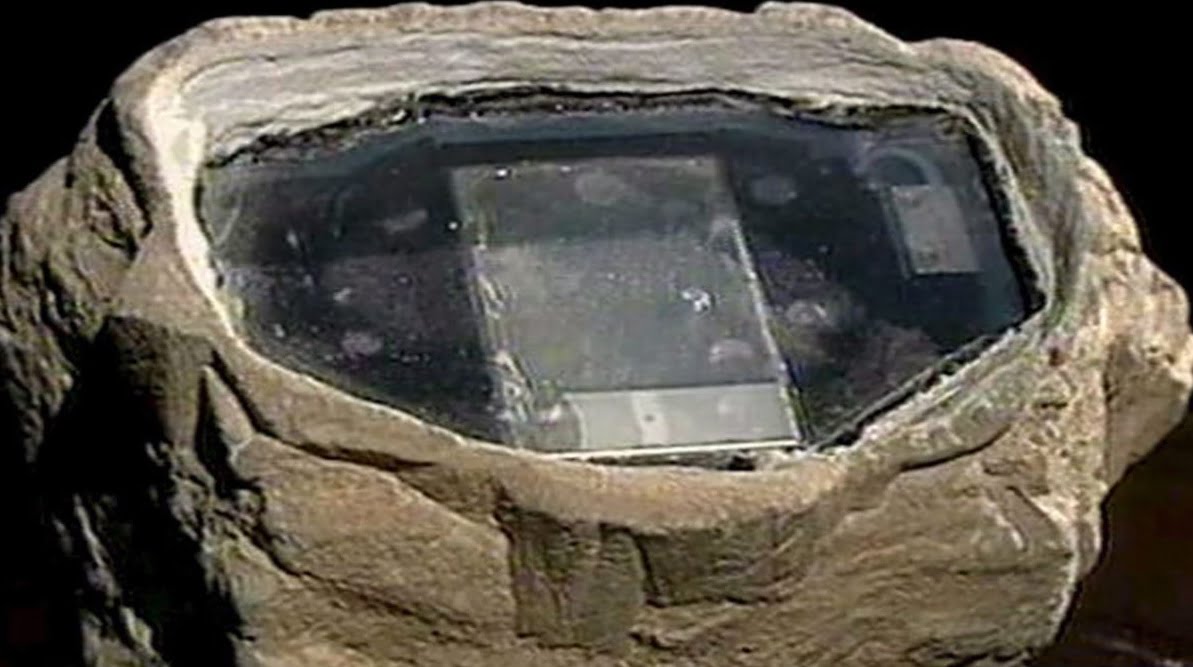In 2006, Arkady Mamontov’s documentary film “Spies”, shown on the Rossiya channel, had the effect of a bomb exploding. It stated that the British had once installed a transmitter disguised as an ordinary stone in one of the Moscow squares. We checked whether this was really the case.
The scandal erupted just a few days after the Russian Federation tightened law on non-profit organizations. Many were surprised at the sudden tightening of the screws, but on the evening of January 22, much began to become clearer. In Arkady Mamontov’s program from the “Special Correspondent” series, an object was demonstrated that looked like an ordinary stone. At the same time, according to the filmmakers, it was stuffed with advanced electronics at the level of space technology and at a cost of tens of millions of pounds sterling.
As described in film, it all started with the fact that in the fall of 2005, Christopher Pierce, secretary of the British Embassy in Moscow, placed this stone in one of the Moscow squares. The first, natural version of the operatives was that we were talking about a regular hiding place for exchanging items. However, it later turned out that a transmitting device built into the stone was capable of reading data at a distance and transmitting it to a laptop computer. That is, in order to transmit or receive information, agents and informants did not need to meet with each other or even approach the stone. It was enough to simply walk close to the object at a normal pace.
Immediately after the release of the film, the Russian FSB announced that the activities of four British intelligence representatives working under diplomatic cover of British Embassy employees were suppressed in Moscow. The British Foreign Office's response was one of "concern and surprise." And then-Prime Minister Tony Blair said that he learned about the scandal through television news, and added: “I’m afraid that from me you will only get the hackneyed “we never comment on security-related issues.”
Of course, the whole epic with the “spy stone” caused an ironic reaction from the liberal part of Russian society - to the point that some carried “suspicious” bricks, stones and lumps of snow to the Lubyanka. Only representatives of NGOs who fell under the hot hand had no time for laughter. Thus, the chairman of the Moscow Helsinki Group, Lyudmila Alekseeva, then stated: “This is one of the links in the campaign of malicious and shameless slander against human rights defenders, which journalists have now launched on Channel One and Channel Two. This is definitely an order from very dark forces in our country, aimed at ensuring that the most active human rights organizations can be shut down under this law.” The fact is that the Moscow Helsinki Group appeared in Mamontov’s film as an object of financing from disgraced British structures.
Gradually, the resonance of the story faded, and not everyone reached the news that appeared six years later, in January 2012. In the BBC documentary Putin, Russia and the West, Tony Blair's former chief of staff Jonathan Powell admittedthat the story of the “spy stone” in Moscow was real. Powell said the British intelligence services were embarrassed. “They caught us. Obviously, they knew about this for some time and simply held out until a politically advantageous moment,” the Briton said. The news, of course, did not surprise the intelligence officers, but the very fact of voluntary confession caused bewilderment among professionals. “I cannot understand why this happened, because, as far as I know, there was no pressure on the authorities to admit their involvement in the stone,” - stated then intelligence historian, KGB officer who fled to the West, Alexander Vasiliev, in an interview with Voice of America.
Well, a worthy end to the story was lot, put up for auction on eBay in September 2013. The lot, with an initial price of $3 million, consisted of a “spy stone” similar to the one in Moscow, hundreds of pages of instructions for making and setting up the stone, as well as a disk with data from two years of correspondence between the developer, engineer Gregory Perry, and Lockheed Martin. The engineer claimed that his development, rejected by the company, later became the prototype for the Moscow miracle of technology.
Thus, the story of the “spy stone,” despite the plot in the spirit of Hollywood films, turned out to be true.
Is it true
Read on topic:
1. https://www.bbc.com/russian/international/2012/01/120119_uk_admits_spy_rock
2. https://echo.msk.ru/news/290462.html
3. https://www.golosameriki.com/a/britain-spy-world-2012-01-19-137699738/250149.html
4. https://www.motherjones.com/politics/2013/09/ebay-rock-cam-surveillance/
If you find a spelling or grammatical error, please let us know by highlighting the error text and clicking Ctrl+Enter.







